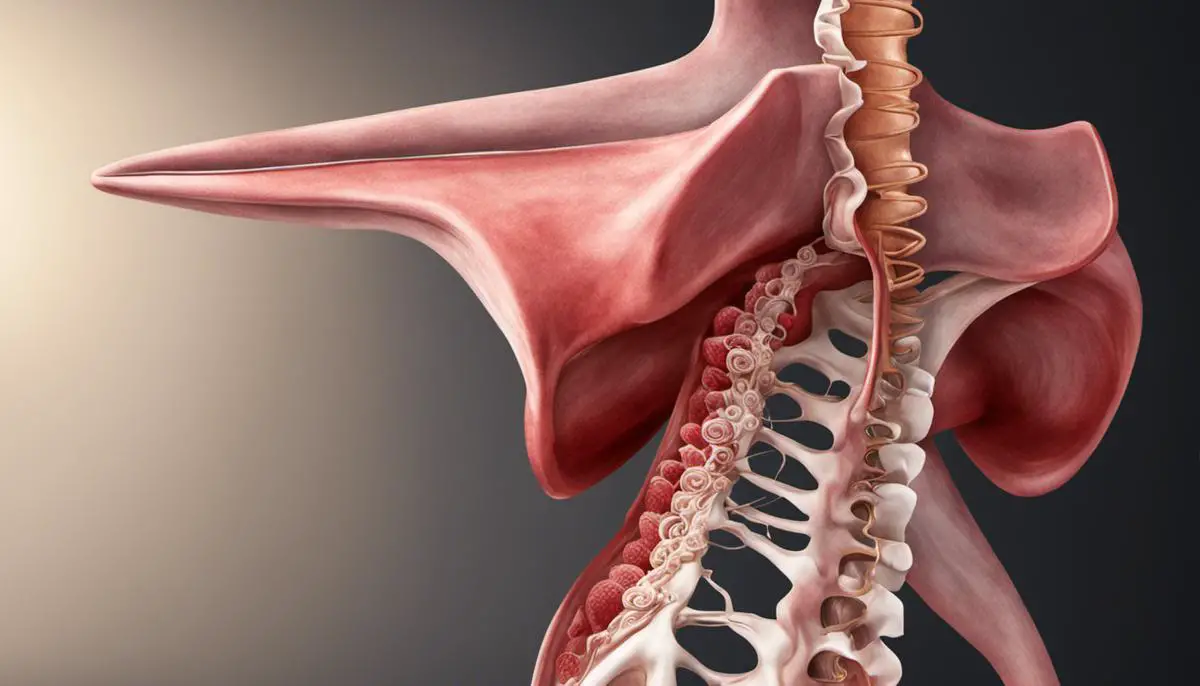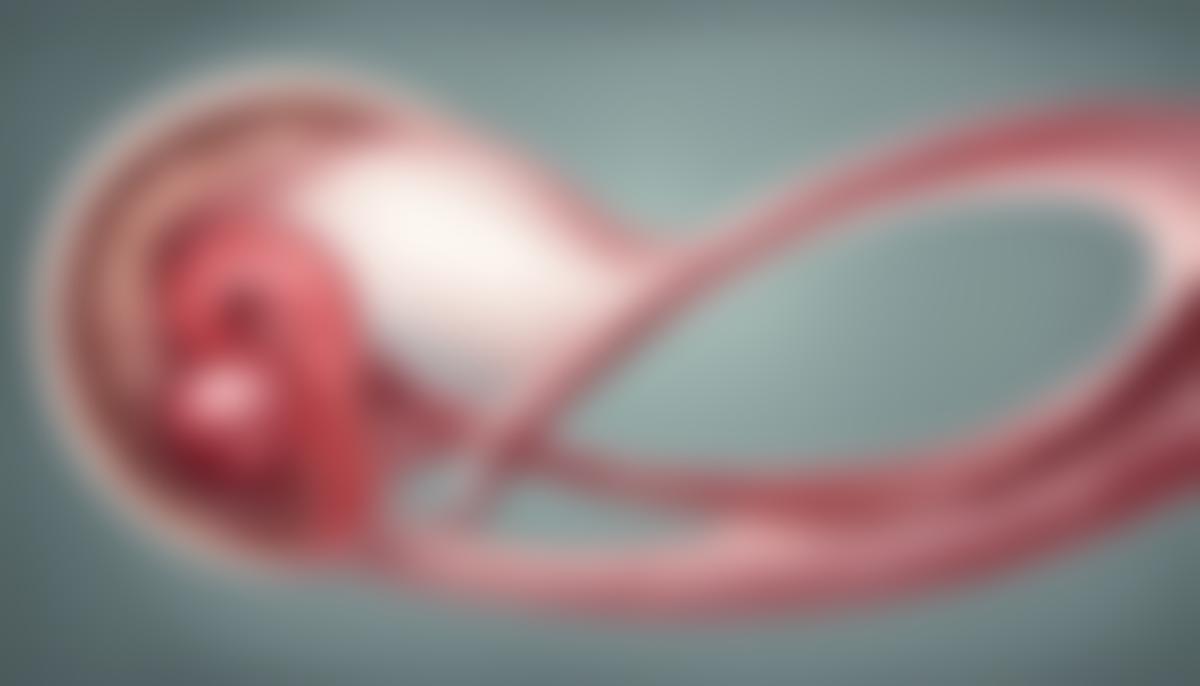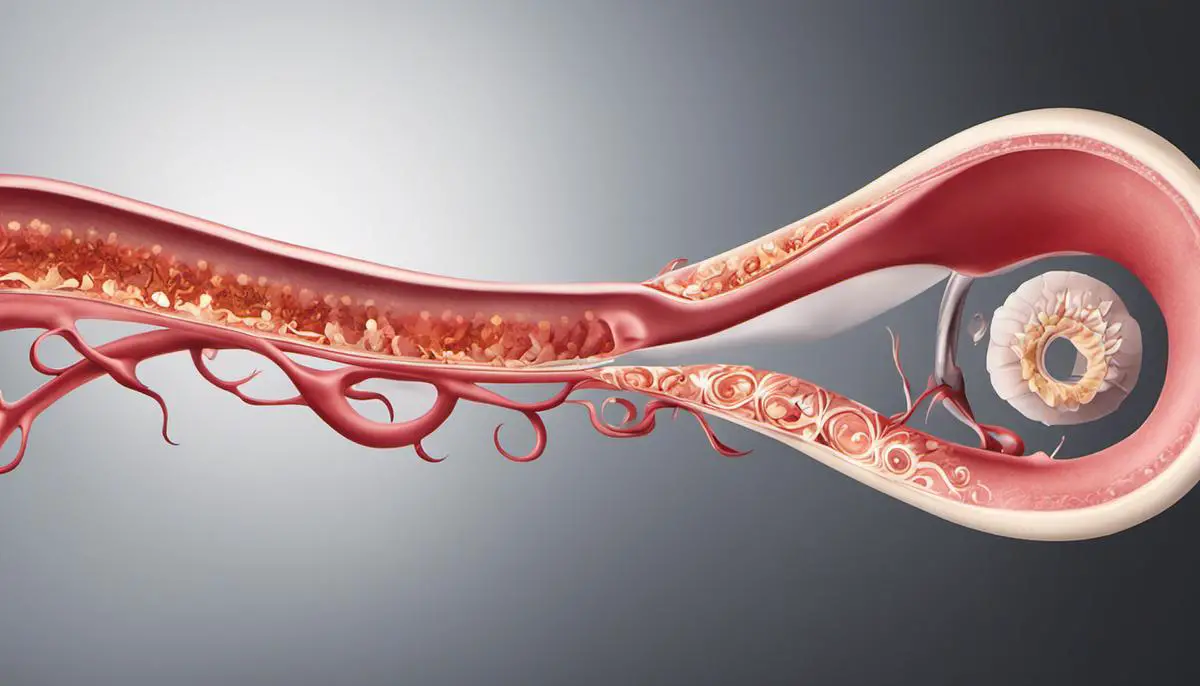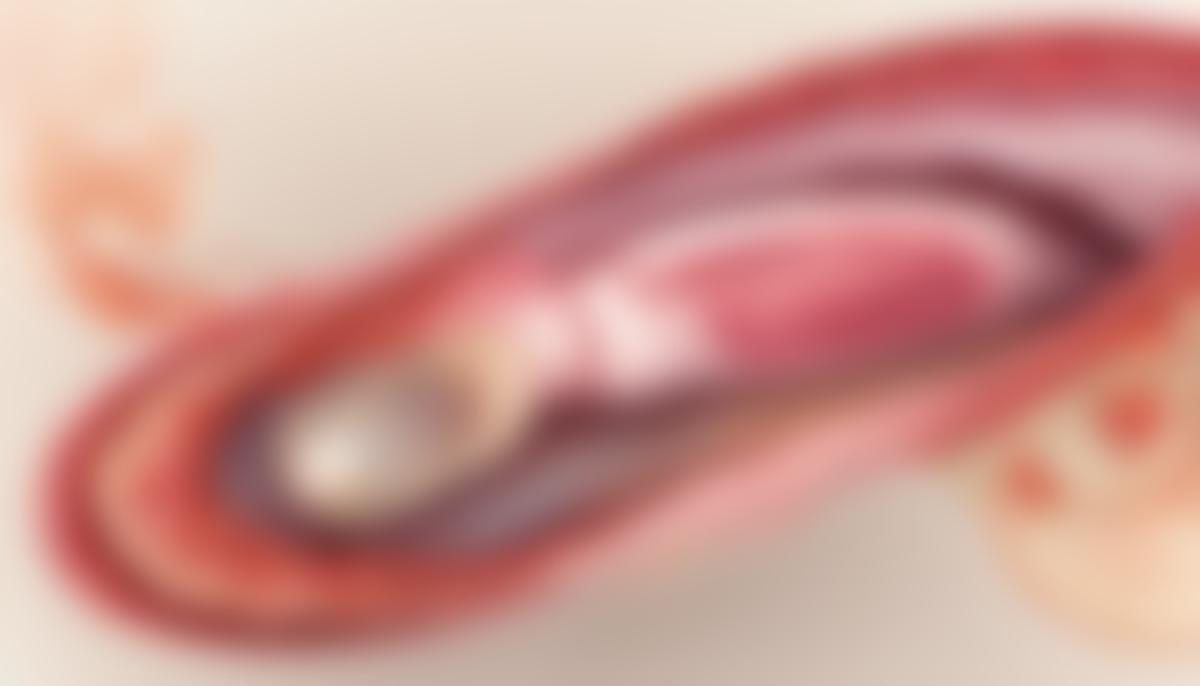Understanding the various conditions that can affect a pregnancy is pivotal for both healthcare professionals and expectant mothers, and retroverted uterus is one such condition that deserves attention. Essentially, a retroverted uterus, a state where the uterus tilts backward at the cervix instead of forward, warrants discussion due to its potential to cause unique symptoms during pregnancy. While this condition is generally common and can often be attributed to genetics or other factors, the signs that may accompany it throughout the gestational period, remain largely unknown. This in-depth article will shed light on these specifics, enabling expectant mothers and medical professionals to identify and handle pertient symptoms effectively, thereby enhancing pregnancy outcomes.
What is Retroverted Uterus
Understanding Retroverted Uterus
A retroverted uterus, also known as a tipped or tilted uterus, is a condition where the uterus is tipped backwards towards the spine, as opposed to the usual forward position towards the belly. It is located in the same position within the reproductive system, between the bladder and rectum, but simply leans in a different direction.
Retroverted uterus is a common condition, with estimates suggesting that around 20% to 30% of women have a uterus that tilts backwards. It is important to note that this is considered a normal anatomical variant, much like being left-handed, and typically does not have significant impacts on health or fertility.
The position of the uterus can naturally vary from woman to woman and is not always the result of underlying issues. However, sometimes the condition can be caused by other factors such as pelvic surgery, pelvic adhesions, endometriosis, pelvic inflammatory disease, or menopause. In rare cases, a retroverted uterus may also be a congenital condition, meaning it is present at birth.
Symptoms of Retroverted Uterus during Pregnancy
Most women with a retroverted uterus will not experience any symptoms, and the condition will often correct itself by the second trimester of pregnancy as the uterus grows and expands up into the abdomen. Nevertheless, potential symptoms can occur. They can be physical discomforts such as back pain, urinary tract infections due to pressure on the bladder, difficulty with traditional forms of pelvic examination, difficulty inserting tampons or discomfort during sexual intercourse. However, most of these symptoms are not exclusive to retroverted uterus and can be associated with other conditions as well, meaning a thorough medical examination and diagnosis is necessary.
During pregnancy, before the aforementioned self-correction commonly occurs, a woman with a retroverted uterus may experience a condition known as an “incarcerated” uterus. This is a rare complication where the uterus becomes trapped in the pelvis, rather than lifting out of the pelvis as it grows. Symptoms for this situation can include pain and discomfort, urinary retention, constipation, and in some cases, miscarriages. If encountered, this situation usually rectifies itself by the 10th to 12th week of pregnancy, but may require medical intervention in rare cases.
It is significant to understand that while a retroverted uterus can contribute to physical discomfort, it is generally not associated with miscarriage, infertility or complication during delivery. To accurately identify any potential issues, regular check-ups and open communication with healthcare providers is recommended.
Being aware that a retroverted uterus is a common condition and typically does not impact pregnancy can provide some reassurance. Nevertheless, if any unusual symptoms occur, it’s imperative to consult your healthcare provider without delay. It’s vital to remember that each pregnancy is unique, hence, understanding your personal health situation and ensuring your comfort is of the utmost importance.

Common Symptoms of Retroverted Uterus during Pregnancy
Comprehending Retroverted Uterus During Pregnancy
A retroverted uterus, oftentimes referred to as a tilted or tipped uterus, is a naturally occurring anatomical variation seen in about 20% of women. This condition is characterized by the uterus tilting backwards towards the spine, contrary to the typical forward tilt towards the abdomen. In the vast majority of cases, a retroverted uterus does not cause any discernible symptoms, whether a woman is pregnant or not. However, in some infrequent instances, this condition might lead to certain complications or discomfort during pregnancy.
Early Pregnancy Symptoms of Retroverted Uterus
In the early stages of pregnancy, a retroverted uterus may not present any noticeable symptoms for some women. For others, it can result in mild discomfort or pain in the lower back, a heightened need to urinate due to the pressure on the bladder, difficulties during sexual intercourse, increased menstrual cramping, and issues with bowel movements due to the uterus pressing on the rectum. It is important to note that some of these symptoms are common in any pregnancy, regardless of the position of the uterus.
Potential Complications during Mid-Pregnancy
Around the 10 to 12 week mark, the growing uterus usually pops out of the pelvis into the abdomen, correcting its position naturally. In some rare instances, a retroverted uterus gets stuck in the pelvis, a condition known as an incarcerated uterus. This condition’s symptoms are more significant and might include severe abdominal pain, difficulties passing urine or stools, and uncommonly, a rupture of the membranes, causing a leak of fluid or bleeding.
Retroverted Uterus and Pregnancy Management
If you are diagnosed with an incarcerated uterus, your healthcare provider will first attempt a manual repositioning of the uterus. If unsuccessful, a surgical procedure might be needed. But rest assured, in most cases, a retroverted uterus poses no impediment to a healthy pregnancy or delivery. Regular prenatal check-ups are vital in tracking the progress of your pregnancy and quickly diagnosing and managing any potential conditions or issues.
Endometriosis and Retroverted Uterus
It’s crucial to mention endometriosis, a condition where tissue similar to the lining of the uterus is found outside the uterus. It can cause a retroverted uterus and symptoms can become more noticeable during pregnancy. These symptoms include pelvic pain, heavy or painful periods, and fertility issues. If you know or suspect you have endometriosis and are pregnant, it’s critical to discuss this with your healthcare provider to best manage your condition during pregnancy.
It’s important to remember that if you experience any unusual symptoms or severe pain during your pregnancy, you should not hesitate to seek immediate medical attention. It’s crucial to have a good line of communication with your healthcare provider and to be straightforward about any concerns or discomforts you may have. Your health, as well as your baby’s, is of the utmost importance.

How Retroverted Uterus can affect Pregnancy
What to Know about a Retroverted Uterus in Pregnancy
A condition known as a retroverted, tilted, or tipped uterus is when the uterus leans backward towards the spine, instead of leaning forward towards the belly, as is usually the case. Approximately 20% of women have a retroverted uterus, with this characteristic often being present from birth and typically inherited genetically.
It’s noteworthy to mention that a retroverted uterus does not ordinarily lead to complications during pregnancy. Many women with this condition experience normal pregnancies and deliveries. Generally, by around the tenth to the twelfth week of pregnancy, the uterus adjusts itself by expanding upward into the abdomen, aligning into the standard position.
Symptoms of a Retroverted Uterus during Pregnancy
Some women with a retroverted uterus may experience no symptoms at all, while others might face discomfort due to the uterus pressing against the rectum or the spine. Symptoms may include back pain, especially during sexual intercourse, difficulties with urination, and general discomfort at the lower abdomen region.
However, every woman is different, so those with a retroverted uterus may experience a varying degree of these symptoms, or none at all.
Possible Complications during Pregnancy
While most pregnancies progress normally, the condition can sometimes lead to a few complications. One of them is a condition called “incarceration,” where the expanding uterus gets trapped in the pelvic cavity. This is a rare condition but can cause discomfort, difficulties with urination and bowel movements, and increased urinary frequency and urgency.
Another potential risk specific to women with a retroverted uterus is difficulty during manual procedures such as ultrasounds or other diagnostic procedures, as the position of the uterus may make it challenging for doctors to get a comprehensive imaging study.
Impact on Labor and Delivery
There is no significant evidence that a retroverted uterus can hinder labor or the delivery process. By the time of delivery, the uterus typically rotates into its standard position. Therefore, there are usually no additional risks during childbirth that can be attributed to this condition.
Wrapping up
Although a retroverted uterus may potentially lead to some complications, it is important to note that such instances are relatively uncommon and most pregnancies are uneventful. Should you have a retroverted uterus and experience any discomfort or other symptoms, seeking medical advice and guidance from your healthcare provider is strongly advised.

Diagnosis and Treatment Options for Retroverted Uterus
Finding out about Retroverted Uterus During Pregnancy
The presence of a retroverted uterus during pregnancy is generally confirmed through a physical examination. Many times, this condition remains undetected until a woman gets pregnant. A standard pelvic examination during pregnancy often brings the retroverted uterus to light.
In those not pregnant, the tilt of the cervix during an exam can typically clue in medical professionals towards the presence of a retroverted uterus. However, once a woman is pregnant, the gradual increase in the size of the uterus might make it difficult for a healthcare provider to determine its position through a physical exam alone. This is where an ultrasound scan comes into play – it is often used for a definitive diagnosis. This non-invasive technique uses high-frequency sound waves to project images of the uterus, effectively allowing the medical professional to ascertain its positioning.
Symptoms of Retroverted Uterus During Pregnancy
Some women with a retroverted uterus experience no symptoms during pregnancy, while others may experience discomfort or pain. The symptoms are often linked to the increase in pressure on the lower back or bowel as the uterus grows during pregnancy.
Persistent back pain can be a symptom of retroverted uterus during pregnancy, as the backwards-facing position of the uterus may exert more pressure on the spine. Some women may experience pain during sexual intercourse, which may continue or intensify during pregnancy. Rarely, a retroverted uterus can cause urinary retention due to increased pressure on the bladder.
Another symptom is difficulty in emptying the bowels or constipation during the first trimester of pregnancy. This situation occurs due to the uterus pressing against the rectum.
However, these symptoms are also common in pregnant women with normally positioned uteruses, so they are not definitive indicators of a retroverted uterus.
Treatment Options for Retroverted Uterus During Pregnancy
In many cases, a retroverted uterus does not require any specific treatment during pregnancy. The uterus often corrects its positioning as the pregnancy progresses, typically by the 10th to 12th week. This process, known as “uterine migration,” helps to alleviate the symptoms associated with the condition.
If symptoms persist, healthcare professionals may consider several management options, both medical and non-medical. Non-medical strategies may include exercises such as pelvic tilts or knee-chest exercises that help to encourage the uterus to move into a more forward position.
Medical management could involve using a pessary, a soft silicone device that is inserted into the vagina to support the uterus. However, this is typically used in extreme cases where the retroverted uterus is causing urinary retention that might harm the kidneys.
Finally, in rare instances, where the position of the uterus poses significant risks to the woman, surgery may be suggested. However, this is an option that doctors consider as a last resort due to potential risks associated with surgery during pregnancy.
While having a retroverted uterus is generally not a cause of concern, it’s important to communicate any discomfort or unusual symptoms to a healthcare provider during pregnancy. This will ensure that any issues can be addressed promptly and adequately.

Given that a retroverted uterus is a common condition, equipping yourself with the knowledge about its potential implications during pregnancy can help in ensuring a safer and healthier pregnancy journey. While symptoms may vary, understanding what one may likely encounter, the possible impact on the pregnancy, and potential complications during labor and delivery is decisive. Furthermore, being aware of the diagnosis and the array of both medical and non-medical intervention options available can assist toward prompt action when necessary. In the end, a well-informed person is better prepared to make decisions and create a smoother pregnancy experience despite the presence of a retroverted uterus.
